There are two giant, mysterious blobs full of hot magma lurking at the edge of Earth’s core.
They are hidden where the planet’s molten iron core meets its rocky mantle, floating like mega-continents in the underworld.
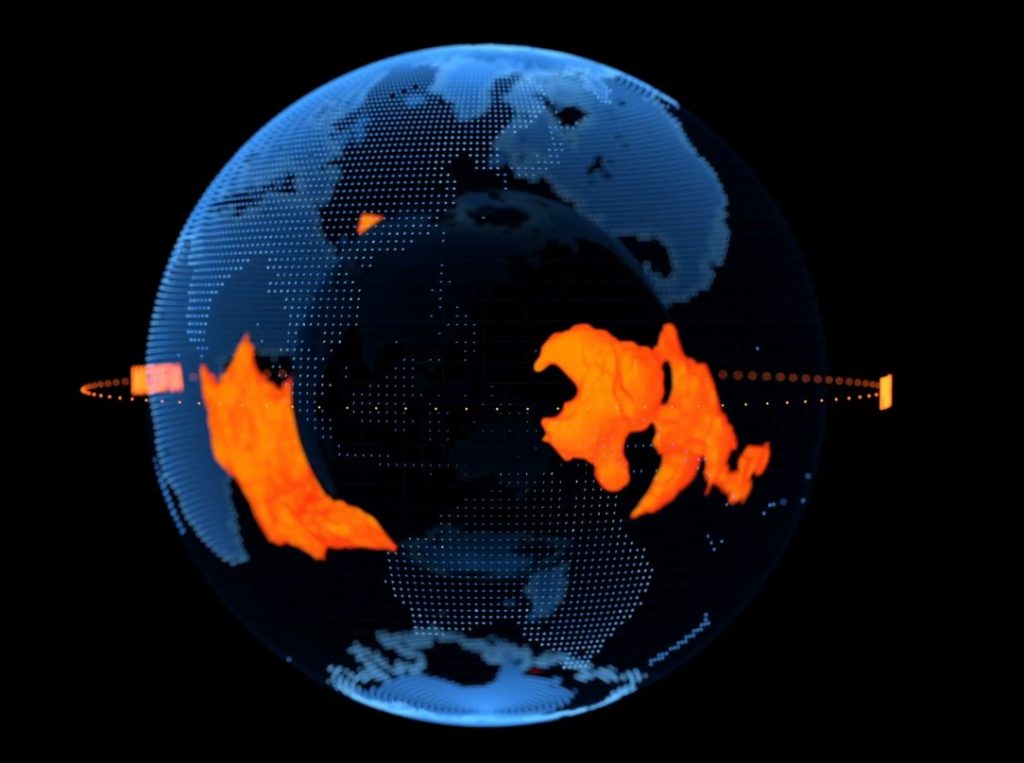
Decades ago, scientists first harnessed the echoes of earthquakes to make a map of Earth’s deep interior. They didn’t just find the onion layers you might remember from a grade-school textbook—core and mantle covered by a cracked crust. Instead, they saw the vague outlines of two vast anomalies, unknown forms staring back from the abyss.
Over the years, better maps kept showing the same bloblike features. One huddles under Africa; the other is beneath the Pacific. They lurk where the planet’s molten iron core meets its rocky mantle, floating like mega-continents in the underworld.
Their highest points may measure more than 100 times the height of Everest. And if you somehow brought them to the surface, they contain enough material to cover the entire globe in a lava lake roughly 100 kilometers deep.
The mysteries of these giant magma reservoirs
The first mystery of these hulking, hidden seismic features is whether they’re made of different stuff than the rest of the Earth’s mantle.
The second mystery is how do these patterns in the deep leave traces on our surface world?
Neither case is settled. But in recent years, many earth scientists have begun to make the case that these vague shapes are piles of dense, smoldering rock that date to the dawn of the planet. And multiple studies in the past year have argued that their persistent influence might be responsible for long-puzzling patterns in volcanic hot spots such as Hawaii.
How did they discover those mysterious blobs of magma?
In 1984, the Harvard researcher Adam Dziewonski first integrated data from many different earthquakes into a global map. The two blobs showed up immediately, attached to the core on either side like Princess Leia’s side buns.
In these regions also known as the large low-shear-velocity provinces, or LLSVPs – earthquake waves seem to slow down, suggesting that the blobs are hotter than the surrounding mantle.
Theories about the blob formation
A theory holds that the blobs are mostly just thermal features. Over time, the mantle roils like an unbearably slow-boiling pot of water. Heat comes from the bottom, where the mantle touches the core, and this heat causes rock in the mantle to waft up in plumes. Where seismologists map blobs, they could just be seeing the blurred bases of the world’s biggest clusters of hot plumes.
In this view, the blobs are mostly made up of the same stuff as the rest of the mantle. And their placement is dictated by plate tectonics from above, not by anything inherent and spooky about these regions. When one tectonic plate in Earth’s crust is pushed below another in a process called subduction, it sinks. This sends colder rock down into the mantle.
Yet no plates have subducted over the blob regions for the past few hundred million years.
So the second hypothesis says that plumes rise from the hot-blob regions, but argue that the blobs are special in and of themselves.
Since the mid-2000s, several teams of seismologists have looked at earthquake signals that merely graze the edges of these regions. Those signals show complicated patterns, indicating that the waves were skimming across a relatively crisp boundary. This suggests that the edges of the blobs mark a transition between materials, not just temperature.
In this view, the blobs are so-called thermochemical piles, clumps of dense rock with a distinct chemical composition. Because of their prolonged contact with the core, they are hotter than the rest of the mantle, causing plumes to sprout.
How did those amazing lava reservoirs form?
Assuming that the blobs are distinct, they could be old — the last surviving remnants of the infant Earth.
One leading idea is that they formed when the entire lower mantle was an ocean of magma, shortly after the planet’s birth.
Rock began to cool and crystallize, but iron stayed melted in the magma ocean. Then, when the last dregs of magma crystallized, they were so dense and iron-rich that they sank to the bottom of the mantle, forming the blobs.
Down there, they would have held out through the early planet’s greatest cataclysm: a hypothesized impact with a Mars-size body called Theia that ultimately birthed the moon. Or, the dense, distinct piles might even be fragments of Theia itself, forever interred in the deep Earth.
In the thermal-only view, plate tectonics are the true movers and shakers of the world, dictating where upwelling happens. But the thermochemical-piles camp believes that hot, heavy, stable blobs would have more of a back-and-forth dialogue with the tectonic system on the surface. Cold currents from sinking plates would push the blobs around like Silly Putty; in turn, upwelling heat from the warm blobs would push the plates right back.
Two mysteries solved by the giant mysterious blobs?
To test how much the blobs are helping to pilot the geophysical ship, scientists looked to Hawaii. In the past year, researchers invoked the blobs to solve two long-standing puzzles there.
Hawaii formation
Consider first the Hawaiian–Emperor chain, a stretch of islands and underwater mountains. The chain starts at the still-growing Big Island and spans 6,200 kilometers, ending near Russia. Geologists have long explained the chain as a hot spot. As the Pacific plate slides over a fixed mantle plume, the plume pushes up new volcanic islands from below.
The only trouble is the bend. Smack in the middle of the chain is a 60-degree kink. The bend, geophysicists thought, came from a long-ago shift in the plate’s motion.
But to actually fit all the data, a scientific paper argued this July, the plume must have moved as well. And for that they blame the blob.
Previous studies showed that the Hawaiian plume may have sprouted far from the edge of the Pacific blob. But currents in the mantle would have deformed the blob and pulled the plume toward it. Eventually the plume would have parked itself near the edge of the blob.
The connection between Hawaii and the Pacific blob might in turn solve another, more widespread puzzle.
Unique chemical signatures of hot-spot islands
Geochemists have long tried to explain why lava from Hawaii and other hot-spot locations such as Samoa, the Galápagos Islands, and Iceland has unique chemical signatures.
In July, a scientific paper presented simulations that traced the plumes under hot spots back down through the flowing mantle. They found that these plumes reach all the way to the blobs, and bring unique chemistry up with them.
The findings confirm that the blobs have to be made out of ancient materials.
Connection of blobs with mass extinctions
According to other studies, the blobs also seem be linked to about two dozen surface regions called large igneous provinces. In those places, at multiple times in Earth’s past, millions of cubic kilometers of lava oozed onto the surface as if through open wounds. Many of these events are themselves linked to mass extinctions like the Great Dying, the largest life-snuffing episode of the past half a billion years.
If that correlation isn’t a coincidence these events could even be the result of blobettes detaching from the main structures. If buoyed to the surface, they would be rock-meltingly hot enough to cause those gigantic, sustained eruptions. In turn, that volcanism could have changed the climate and even led to mass extinctions.
Such a sequence, if verified, would be the ultimate antediluvian time bomb—apocalyptic extinctions triggered by subterranean structures buried since the birth of the world. Find similar headlines on Strange Sounds and Steve Quayle. [Quanta Magazine]


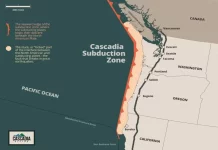

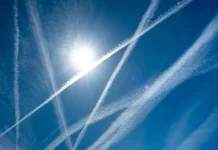
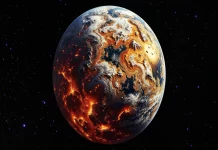
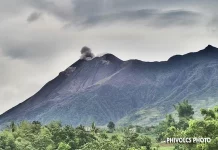
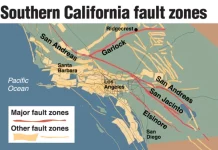
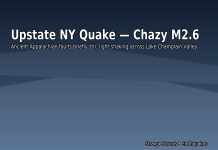
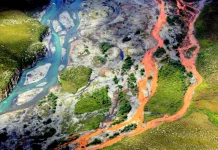
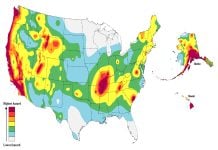
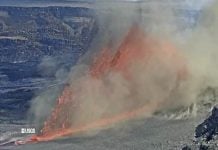

According to the Bible, this will happen. REVELATIONS 8:7 Then the first angel sounded his trumpet, and hail and fire mixed with blood were flung to the earth. A third of the earth was burned up, along with a third of the trees and all the green grass. 2 PETER 3:7 But by the same word the heavens and earth that now exist are stored up for fire, being kept until the day of judgment and destruction of the ungodly. MALACHI 4:1 “For behold, the day is coming, burning like an oven, when all the arrogant and all evildoers will be stubble. The day that is coming shall set them ablaze, says the Lord of hosts, so that it will leave them neither root nor branch. 2 PETER 3:12 Waiting for and hastening the coming of the day of God, because of which the heavens will be set on fire and dissolved, and the heavenly bodies will melt as they burn! REVELATIONS 20:9
And they marched up over the broad plain of the earth and surrounded the camp of the saints and the beloved city, but fire came down from heaven and consumed them.